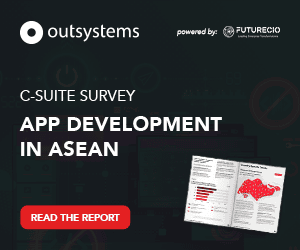Technology has become such a pervasive force reshaping our daily lives - from using rapidly evolving IoT technology to control home appliances to executing complicated foreign exchange trades from one’s couch.
The banking sector has long embraced technology to improve client experience and organisational efficiencies. According to Gartner Research, global technology spending in banking has been increasing 9% a year, on average, outpacing revenue growth of 4%. In some quarters though, banking has been slow to adapt and evolve when it comes to new technologies, and it must catch up.

As CIOs, it is incumbent on us to move ahead of the times and build future-proof organisations amid digital disruption. However, today’s technology has become so ubiquitous with such actionable insight that it can be a daunting task to know how or when to commence digitalisation or what resources should be deployed.
Digitalisation strategy
Firstly, as digital transformation becomes more urgent for banks, a well-executed digitalisation strategy is essential as it allows organisations to identify unstated customer needs as opportunities and swiftly deliver tailored solutions while tracking the entire process from start to end. This approach may seem straightforward, but according to McKinsey research, there is a 4%, and growing, gap in return on tangible equity between digital leaders and laggards.
Research has shown that banks embracing technological infrastructure are monetising their competitive advantage.
Research has shown that banks embracing technological infrastructure are monetising their competitive advantage. For instance, they have seen higher adoption of digital channels by customers, higher levels of personalisation and analytics-driven engagement, more superior customer experience driving higher share of wallet and primary relationship and a higher share of sales through digital channels. A highly digitised service model can lead to a lower cost-to-serve ratio through an optimised combination of physical, remote or hybrid and digital offerings and significantly improve cost-to-income ratio.
Methodological and simple
Next, the digital transformation process should be methodical and simple. Too often, organisations rush headlong to embark on change without taking care to retool their core platforms and paying attention to hygiene. An example of this was the recent CrowdStrike outage.
For our digital transformation, Standard Chartered has employed a wide-ranging strategy to modernise and scale the bank by simplifying and rationalising our tech estate for the future. This includes keeping a rationalised, commodity-based, globally consistent tech stack.
We have built the factory separating the producer from the consumer and ship change via continuous integration and continuous delivery pipelines. Our services are agnostic and run both on and off premises. Our teams build - and own - simplified, commodified platforms that are reusable by business lines and markets across our wide networks.
Investment in talent
Thirdly, investing in the right talent as a skills-based organisation is a crucial factor in achieving meaningful digital transformation. Leading digital banks are increasingly relying on internal experts, but the demand for talent is outpacing supply with McKinsey predicting an annual growth of over 700,000 tech roles compared to an annual increase of 40,000 in tech talent in the UK. The WEF’s Future of Jobs Report 2023 predicts that 44% of workers’ skills will be disrupted by technologies in the next five years
Across the bank, we have been busy defining the skills we need for the future, and embedding skills in the way we hire, develop, and deploy talent. As we simplify, standardise and digitise our business, we are also aligning our talents to their skillsets, expertise and deliverables, such as front-running skills baselining for engineers, assessing technical, domain and human skills for over 6,000 of employees twice a year. We also focus on addressing the underrepresentation of women in taking up future leadership roles in sunrise skill areas, such as data and cyber security. Dedicated learning interventions and mentoring support the development of a future-ready, high potential talent pipeline.
Dedicated learning interventions and mentoring support the development of a future-ready, high potential talent pipeline.
Client-centric digitalisation
Ultimately, digital transformation is futile if we are not doing what our clients want. To me, clients have an almost Maslovian hierarchy of needs which digitalisation must meet to remain relevant. At the foundation, we need our tech to keep the bank safe, secure and resilient; we then need to ensure our tech keeps the bank’s services always-on enabling customer access 24/7 all year-round; and finally, we need to ensure our tech actualises growth for our clients to be a step ahead in life and business.




